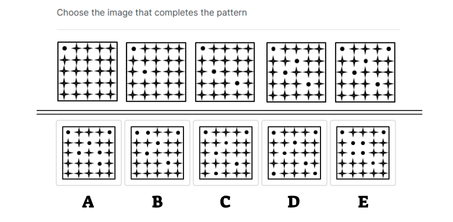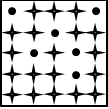Why the CCAT Test is So Challenging and How to Overcome It
The Criteria Cognitive Aptitude Test (CCAT) is a widely used pre-employment assessment that measures cognitive skills like problem-solving, learning speed, and critical thinking. It’s challenging for three main reasons:
- Strict Time Limit: You have 15 minutes to answer 50 questions—about 18 seconds per question. Rushing leads to errors; going too slow means unfinished questions.
- Relative Scoring System: Your score is compared to other candidates. The average is 24/50, but top roles often require 35+ (top 20% of test-takers).
- Personal Weakness Areas: Questions follow a fixed order: Numerical (16–17 questions, ~34%), Verbal (17 questions, ~34%), Spatial (11 questions, ~22%), Logical (5–6 questions, ~10%). Weakness in one area can drag down your score.
Here's a visual breakdown of the question types:
|
Question Type |
Approximate Number |
Percentage |
Examples |
|
Numerical Reasoning |
16–17 |
34% |
Number series, word problems, basic algebra |
|
Verbal Reasoning |
17 |
34% |
Analogies, sentence completion, antonyms |
|
Spatial Reasoning |
11 |
22% |
Shape series, odd one out, matrices |
|
Logical Reasoning |
5–6 |
10% |
Syllogisms, seating arrangements |
To overcome these:
- Precision Practice: Use questions mirroring the real test to build accuracy (key to success).
- Adaptive Learning: Identify weaknesses (e.g., via a diagnostic test) and focus there first—start easy, then advance.
- Level-Based Practice: Include beginner, intermediate, and advanced questions in all areas to push beyond average scores.
Scoring 35+ requires answering correctly in under 20 seconds per question, focusing on weaknesses, and practicing at real difficulty levels.
Top 5 Time-Saving Tips for the CCAT
- Skip Tough Questions Fast: If a question takes over 10 seconds, mark it and move on to maintain pace.
- Master Mental Math: Practice quick calculations (e.g., percentages, fractions) to speed up Numerical questions.
- Learn Analogy Patterns: Memorize common relationships (e.g., synonyms: Big is to Large as Small is to Tiny; cause/effect: Rain is to Wet as Fire is to Hot) to solve Verbal questions in under 15 seconds.
- Use Elimination for Spatial: Quickly rule out incorrect shapes or patterns to narrow down options.
- Prioritize Accuracy in Logic: Take a moment to read syllogisms carefully, as errors here are costly.
A Complete Online CCAT Preparation Course
Our CCAT PrepPack contains 6 simulations that follow the exact CCAT test format. Each test includes 50 questions that become progressively more challenging, mimicking the real exam experience.
In the pack you'll find:
- Questions that follow the official test order, and difficulty.
- Detailed explanations to strengthen your understanding and improve your performance.
- The exact time limits and structure of the real CCAT exam.
Enroll in our guided practice plan, starting at $79, to ensure success on your CCAT exam.
“I am not a native English speaker. So English questions are relatively hard for me. I used to have a 37 marks 3 years ago. I recently studied this course for 5 days and faced CCAT and managed to score 40. Most questions in this course is relatively harder than CCAT but in a good way.”
Isuru S. On the CCAT Test
⭐⭐⭐⭐⭐
-
“I used the CCAT prep materials the week before a CCAT with Crossover. The many Steps of practice questions and simulation practice tests really helped me determine the best strategy for me and get familiar with each type of question (and range of difficulty). As a result, I passed the exam and was offered the position”
Brittany B. On the CCAT Test
⭐⭐⭐⭐⭐
-
“Very well organized training material”.
Peter R. On the CCAT Test
⭐⭐⭐⭐⭐
CCAT Practice Test Questions
This free practice mirrors the CCAT’s structure, difficulty, and time pressure. It includes more samples from all categories (Numerical, Verbal, Spatial, Logical) for better preparation. Try timing yourself!
CCAT Sample Numerical Reasoning Questions
The actual test (as well as this CCAT practice test) begins with three numerical questions.
To answer correctly, you must possess a foundational understanding of mathematical principles such as basic algebra, arithmetic, and fractions. Here are just a few examples:
Intermediate Question
Dave is five years older than Jonathan; Jonathan is twice the age of Alice, and Alice is a fifth of Jean's age. Jean is 10 years old. How old is Dave?
Advanced Question
A new TV, worth $500, loses $75 in value every year. If T represents the number of years since the purchase of the new TV, which of the following expressions represents the value of the TV at time T?
CCAT Sample Spatial Reasoning Questions
There are four spatial “Next in Series” questions on the CCAT. Each one presents five figures that follow a specific pattern. Your goal is to identify which figure comes next in the series.
Use these two practice questions to get a feel for how it works.
Intermediate Question
Which of the following boxes should be next?

Advanced Question
Which of the following boxes should replace the question mark (?) to complete the pattern?


Tips for “Next in Series” Questions:
- Form a Hypothesis: Look at 2–3 frames to spot how objects change.
- Verify It: Ensure the pattern holds for the entire sequence.
- Eliminate Distractors: If the pattern fits, discard any clearly incorrect answers.
- Check Answer Choices if Stuck: Sometimes, focusing on one element (like a single shape’s rotation) helps rule out wrong options quickly.
Elevate Your CCAT Score—Unlock Your Dream Job!
Perfect your CCAT performance with practice designed for busy professionals like you. Our CCAT PrepPack makes exam preparation engaging, effective, and straightforward:
- Real Test Simulation: Experience 6 timed practice tests that replicate the pressure and pace of the actual CCAT.
- Step-by-Step Guidance: Enjoy friendly, easy-to-follow explanations that demystify each question.
- Progress You Can Measure: Watch your score improve with each simulation as you build essential skills.
- Career Boost: A higher CCAT score can be your key to landing that dream job.
CCAT Sample Verbal Reasoning Questions
The next batch of questions is taken from the 18 Verbal questions you'll get on the CCAT assessment:
Analogy Questions
Intermediate Question
STRINGS is to GUITAR as:
Advanced Question
ABHOR is to DENOUNCE as ...

Tips for Analogy Questions:
- Turn analogies into sentences: Even if they’re not written that way, this helps you spot the relationship.
- Learn the 8 relationship types: Synonyms, antonyms, cause/effect, degree of intensity, category, descriptive connections, processes, and functions.
- Pay attention to order: The right relationship in reverse is still wrong.
Sentence Completion Questions
Intermediate Question
Choose the word
3. Choose the word or words that, when inserted in the sentence to replace the blank or blanks, best fits the meaning of the sentence.
Since porcelain is an extremely hard and ___ substance, it is used in dentistry to create artificial teeth.
Advanced Question
Replace The Blank
4. When inserted in the sentence to replace the blank or blanks, choose the word or words that best fits the sentence's meaning.
Electronic information and automated systems are essential to ____ all major federal operations.

Many of the CCAT verbal questions rely heavily on English vocabulary, which is tough to improve quickly. However, with practice, you can still answer many questions correctly by using context clues and reasoning skills—even if you’re unsure of some words’ meanings.
CCAT Sample Logical Reasoning Questions
Syllogism
Intermediate Question
Question #1
Assume the first two statements are true. Is the final statement 1) True, 2) False, or 3) Uncertain based on the information provided?
Bob is taller than Rob.
Job is shorter than Bob.
Job is the shortest among the three.
Advanced Question
Question #2
Assume the first two statements are true. Is the final statement 1) True, 2) False, or 3) Uncertain based on the information provided?
Earrings and piercings are allowed at "Sacred Jar" high school, but only for students who are 17 or older, or for those who supply a parent’s written permission.
Maria is 17-year-old, but she does not have her parent’s permission.
Maria can attend school while wearing earrings and piercings.
FAQS
Employers, mainly in North America, often pick the CCAT for hiring. It helps in hiring by reducing costs and finding candidates who are good at thinking critically, solving problems, learning quickly, and applying new information.
Compared to other job-related tests, the CCAT is known to be challenging. It gets harder as you move to the 50th question. The math questions need quick thinking and strong analysis skills. People who've taken the CCAT and other tests like the Wonderlic and PI find the CCAT the most demanding.
This is Criteria Corp's online platform where candidates take their tests. You can find out more about the CCAT On-Demand Assessment on our dedicated page.
The UCAT is a shorter test by Criteria Corp focusing on math, logic, and visual reasoning without the verbal section found in the CCAT. Click to see more info on the UCAT.
Yes, there's a longer CCAT version giving you 22 minutes instead of 15, which is about 50% more time. This is available for those who aren't native English speakers or have a medical condition that requires more time.
Several employers use the CCAT in their hiring process, including Pennymac Aptean, Cvent, Finastra, Granicus, PowerSchool, TIBCO, Vertafore, Xactly, Infoblox, Mitratech, Ping Identity, and Relias Learning. For specific details on each, check out our guide on the Vista Equity Partners Exam.
Continue Practicing for the CCAT Exam
Access more CCAT FAQs tests and other valuable CCAT prep materials so that you take the test while being as prepared as possible:
- The Definitive CCAT Practice Course - 6 full-length CCAT practice test simulations and hundreds of extra practice drills to sharpen your abilities in the four test areas.
- The Complete CCAT Scores Guide - learn about the CCAT raw score, percentile score, passing score, what's considered a good score, and other metrics that will affect your CCAT scores report.
- CCAT Numerical Questions Guide - word problems, arithmetic calculations, number series, and tables & graphs.
- CCAT Verbal Reasoning Questions Guide - sentence completion, antonyms, attention to detail, and analogy questions.
- CCAT Spatial Reasoning Questions Guide - Odd One Out, matrices, and shape series questions.
- CCAT Logic Questions Guide - syllogism and seating arrangement questions.
- Criteria On Demand Assessment - See what to expect on the testing platform of your upcoming assessment
Related topics: Numerical Reasoning | Number Series Questions | Free Aptitude Tests






